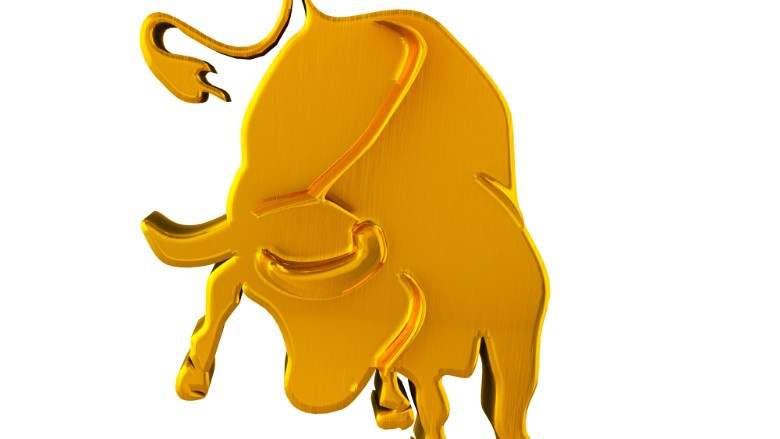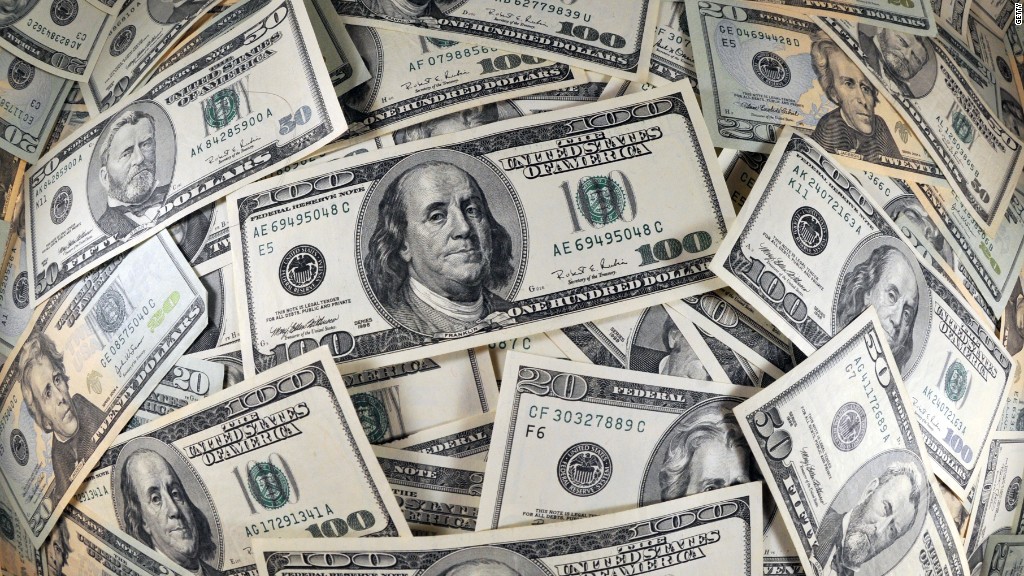
Gold bugs were licking their chops earlier this year. The price of the yellow metal surged in January while stocks were tanking. It briefly topped $1,300 an ounce.
But the gold rally has come to an abrupt halt. Prices have plunged more than 11% from their highs earlier this year to about $1,150.
Much of the sell-off has taken place in the past few weeks as the dollar has strengthened.
That's key. Gold is often looked at as an alternative currency. It does well when investors are worried about the outlooks for the legal tender printed by governments.
There are no such concerns about the greenback right now.

What's next for gold? Surprisingly, some market experts are still bullish.
Jeffrey Gundlach, the well-known investing guru who runs the money management firm DoubleLine Capital, is reported to have said in a presentation earlier this week that he thinks gold could rebound to $1,400 an ounce.
His reasoning? Negative bond yields in Europe will make gold look more attractive.
Gold is an asset that often outperforms in times of both inflation and deflation. In other words, when the market is scared of something, people flock to gold.
And those negative bond rates are a tell-tale sign of deflation worries. Investors are so spooked by the prospect of falling prices that they are willing to tolerate a small loss on government bonds rather than risk bigger losses in other parts of the market.
Related: 25% of physical gold buyers are crazy, metals executive says
Still, it's important to note that Gundlach has been bullish on gold for some time. And the negative bond yields overseas may also reflect the fact that the European Central Bank is finally buying bonds right at the time that the Federal Reserve is expected to soon start raising interest rates.
Higher rates in the U.S. should make the dollar even stronger. And that could be bad for gold -- at least in the short-term.
"It's the expectations of Fed rate hikes that are hurting gold. Momentum is bearish." said Jeffrey Nichols, senior economic advisor with Rosland Capital.
But Nichols agrees with Gundlach. He thinks gold should eventually bounce back.
Related: Stop crying about the Fed rate hikes
Why gold will rise: Nichols acknowledged that prices will probably remain volatile for the next few months though. But he believes the growth of the middle class in China and India will lead to a big pickup in demand for gold from consumers.
"It's only a matter of time before gold turns around," he said. "Gold should climb to a much higher price over the next three to five years thanks to physical demand from emerging markets."
Michael Cuggino, manager of the Permanent Portfollo fund, also thinks that there will be more foreign buyers for gold ... but it will probably be central banks holding it as an investment.
The dollar may be the currency flavor of the month right now. But what happens when the dollar eventually weakens? Many central banks may find that gold looks like a safer bet than the euro.
"Over time, gold prices will appreciate. Russia, China, India and central banks of other countries are looking to diversify their holdings. Buyers of any type will provide a floor for gold," he said.
Related: The dollar is crushing other currencies
Cuggino also conceded that gold prices will jump around a lot for the foreseeable future. Still, he has about 20% of the fund's assets tied up in gold as a way to hedge against inflation and market volatility.
That's a much higher percentage than most financial advisers recommend for the average investor. But a little bit of gold as a long-term bet probably makes sense for your portfolio.
It just might be safer to buy shares of gold mining stocks or popular exchange-traded funds like the GLD (GLD) or GDX (GDX) than hoarding the actual metal in your basement.


